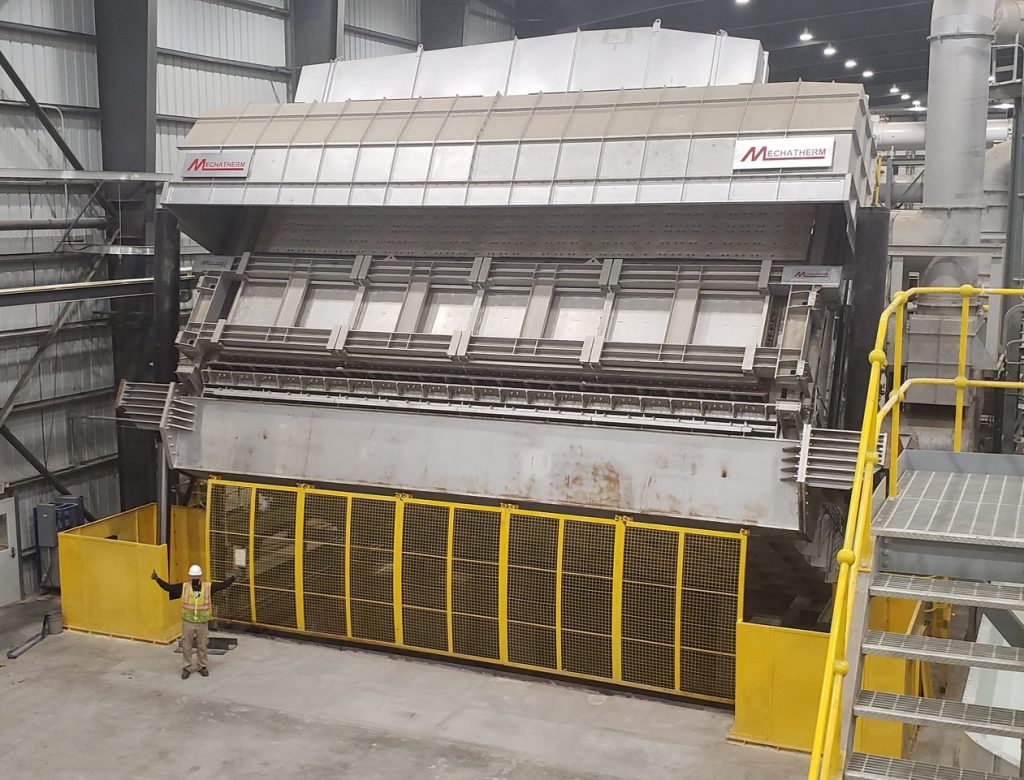
By Alex Lowery, Contributing Editor.
Slips, trips, and falls are among the most common causes for work-related injuries and fatalities. These three hazards are commonly grouped together because in many ways they are linked. For example, a remelt worker on a sow casting line lost track of his immediate surroundings. The worker took a few steps backwards tripped and fell into a sow mold filled with molten metal. The worker suffered severe burns to his back, buttocks, and legs.
The U.S. Centers for Disease Control and Prevention stated that 26% of all non-fatal work injuries in 2019 resulting in days missed from work were caused by slips, trips, and falls. The European Union has identified these three hazards as the main cause of accidents that resulted in more than three days absence from work. Finally, according to the U.S. Bureau of Labor Statistics, these kinds of accidents were also responsible for over 792 fatalities in 2019.
Slips
Identifying surfaces and substances that cause slips is important in eliminating slipping hazards from the workplace. Surfaces that can be slippery vary and include but are not limited to concrete, asphalt, and even steel surfaces. The application of steel flooring around machinery to prevent damage to a concrete floor is growing in the industry. Some companies have installed steel plate with a raised checkered or diamond pattern that has proven less slippery than bare steel.
Poor housekeeping is another major cause of slips. All areas should be kept clean and tidy, with floors and access routes clear of obstacles. Any rubbish and production waste (e.g., grindings, shavings, etc.) should be removed daily. Inspect machinery and moveable equipment for fluid leaks. Clean up any spills with the appropriate cleaning method ensuring no residue is left on the surface of the floor. Furthermore, it is important that companies provide good lighting, ensuring that the floor surface and all potential hazards (e.g., puddles, debris, etc.) can be clearly seen.
In addition, anyone entering a workplace in the industry for their first time should have their clothing inspected. This inspection includes evaluating footwear. Shoe inspection should take into account the type of job, floor surface(s) the individual will encounter, and if slip resistance of the soles of their shoes is required. This could eliminate slips caused by wearing smooth soled (e.g., dress shoes) instead of slip resistant footwear.
Trips
Potential trip hazards throughout a plant include but are not limited to holes and cracks in the cement, uneven walkways, stairs, and loose carpets and mats. Concrete floors can be damaged and should be inspected on a regular basis. Any damage should be repaired immediately. Uneven sidewalks or concrete floors are a common tripping hazard that can easily be corrected by hiring a specialized contractor to grind the uneven surfaces smooth. The steel plates companies use to protect concrete floors must also be inspected to ensure that the edges are not a tripping hazard.
Stairways are another hazard that many companies and workers overlook until an incident occurs. All plants should require the use of handrails while climbing and descending stairs—regardless of how many steps there are. For example, holding a handrail may have prevented a serious incident from taking place a few years ago, in which a smelter worker was descending a three-step stairway and tripped. While falling the worker’s hardhat dislodged and he hit his head, causing a severe head injury that he succumbed to a few days later.
Falls
More fatalities are associated with falls than the previous two types of accidents already discussed. Every incident is obviously unique, but some similarities can be gleaned from incidents involving falls. In general, the areas where falls typically occur are fixed, such as overhead platforms, elevated workstations, or into holes in the floors and walls. The fixed nature of these potential hazards, makes it much easier for employers to take preventive measures to mitigate the hazard compared to moveable dangers, such as a forklift truck.
Aluminum plants should establish engineering controls to prevent employees from falling. A guardrail with a toe board should be installed around every open-sided platform, floor, or runway that is 4 ft or higher than the ground or next level. In addition, guardrails should be installed in any area where a worker can fall into or onto a dangerous machine or equipment (e.g., conveyor belt, press, etc.), regardless of the height. Rails should be installed on every floor hole, even temporary ones like manholes. Other means of fall protection may be required for specific jobs or tasks, including safety harness and lines, safety nets, stair railings, and handrails.
Conclusion
Slips, trips, and falls can happen to any worker no matter their position or length of service in the industry. All individuals entering aluminum industry workplaces need to be educated on these hazards. To prevent these incidents from occurring, aluminum companies have to identify problem areas, take action to correct them, and finally check that the actions taken are and continue to be effective. Regular scheduled inspections will prevent new problem areas from going unnoticed and mitigate such hazards in the future.
Editor’s Note: This article first appeared in the December 2020 issue of Light Metal Age. To receive the current issue, please subscribe.
